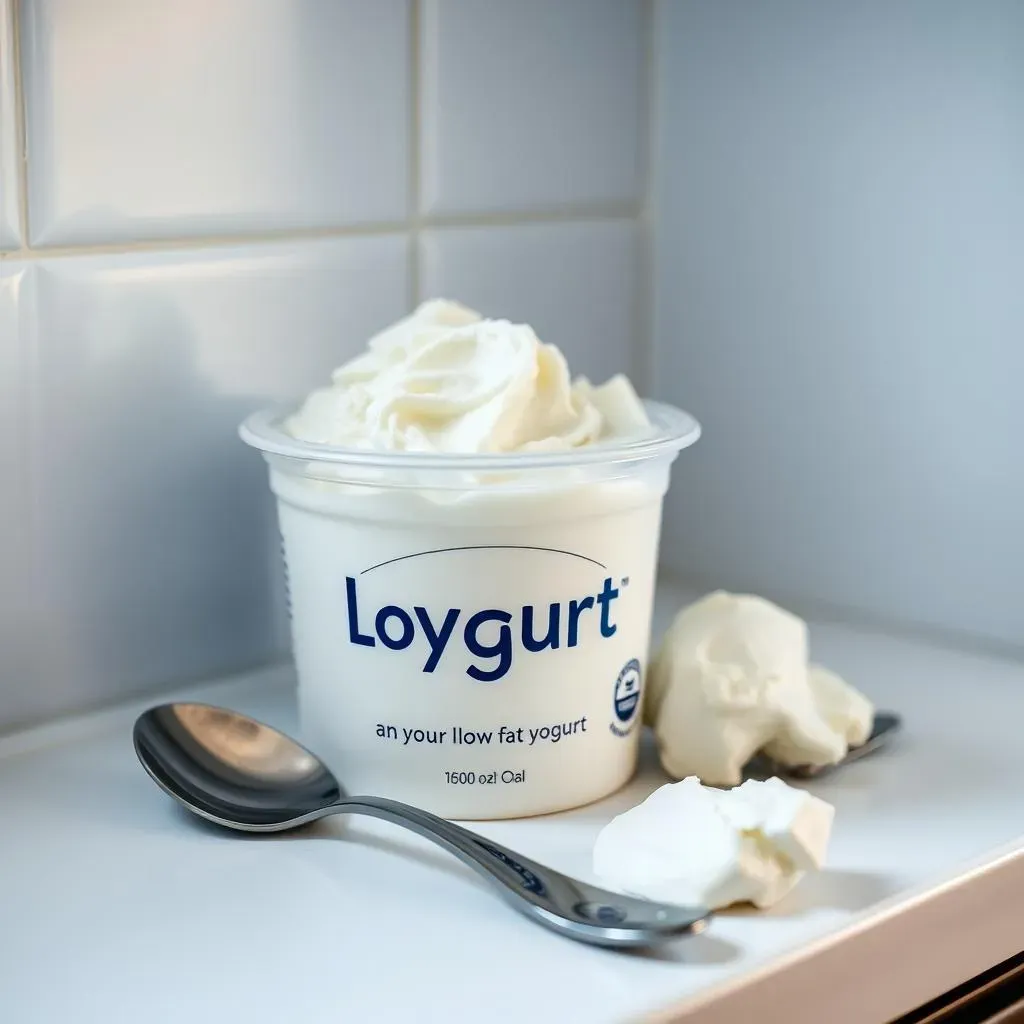Table of Contents
Ever stared into your fridge, eyeing that carton of low-fat yogurt nearing its expiration date, and wondered, "Can you freeze low fat yogurt?" You're not alone! It's a common question, especially when trying to reduce food waste or simply stock up on your favorite healthy snack. Freezing yogurt seems like a no-brainer, but will it turn into a grainy, separated mess? Will it still be good for smoothies? This article dives deep into the world of frozen low-fat yogurt, exploring the ins and outs of preserving this creamy treat. We'll cover everything from how freezing affects the texture and taste, to the best methods for freezing and thawing, and even some creative ways to use your frozen yogurt. So, before you toss that yogurt into the freezer, let's explore the do's and don'ts of freezing low-fat yogurt to ensure you get the best results. Get ready to unlock the secrets to keeping your yogurt fresh and delicious for longer!
Does Freezing LowFat Yogurt Affect Texture?

Does Freezing LowFat Yogurt Affect Texture?
Alright, let's get real about texture, because that's the make-or-break deal when it comes to freezing yogurt. The big question: does freezing low-fat yogurt affect texture? The short answer is, yeah, it usually does. Yogurt, especially the low-fat kind, has a delicate balance of water and milk solids. When you freeze it, those water molecules form ice crystals. These crystals disrupt the smooth, creamy structure of the yogurt. When you thaw it, you'll often find a slightly grainy or watery consistency. It's not necessarily *bad*, but it's definitely different from that silky-smooth texture you get straight from the fridge.
How to Freeze LowFat Yogurt the Right Way

How to Freeze LowFat Yogurt the Right Way
Portioning is Key
so you're determined to freeze that low-fat yogurt! Smart move. But before you just chuck the whole container in the freezer, let's talk strategy. Freezing yogurt in smaller portions is the way to go. Why? Because it thaws faster and more evenly, which minimizes that textural weirdness we talked about. Plus, it's way more convenient when you just need a little bit for a smoothie or a recipe.
Think about how you'll use the yogurt later. Individual servings in small containers or ice cube trays are perfect for smoothies. Larger portions in freezer-safe bags work well for baking or cooking. Pro tip: line your ice cube tray with plastic wrap for easy yogurt cube removal later. No one wants to wrestle with frozen yogurt!
The Freezer-Friendly Container Matters
Now, let's get serious about containers. Not all containers are created equal when it comes to freezing. You want something airtight to prevent freezer burn and those funky freezer odors from seeping into your precious yogurt. Freezer-safe plastic containers with tight-fitting lids are a solid choice. You can also use freezer bags, but make sure to squeeze out as much air as possible before sealing them. Air is the enemy!
Don't forget to leave a little headspace in your containers, especially if you're using rigid ones. Liquids expand when they freeze, and you don't want your container to crack or explode in the freezer. Nobody wants a yogurt explosion clean-up duty.
Container Type | Pros | Cons |
|---|---|---|
Freezer-Safe Plastic Containers | Airtight, durable, reusable | Take up more space, can crack if overfilled |
Freezer Bags | Space-saving, flexible | More prone to freezer burn if not sealed properly |
Ice Cube Trays | Perfect for individual servings, easy to portion | Requires transferring cubes to a bag for long-term storage |
Creative Uses for Frozen LowFat Yogurt

Creative Uses for Frozen LowFat Yogurt
you've got a stash of frozen low-fat yogurt – now what? Don't just let it languish in the freezer! There are tons of creative uses for frozen low-fat yogurt beyond just eating it straight (though, hey, no judgment if you do!). Think of it as a blank canvas for healthy and delicious creations. From smoothies to popsicles to creamy dips, the possibilities are endless.
One of my favorite ways to use frozen yogurt is in smoothies. It adds a wonderful creaminess and tang, plus a boost of protein and probiotics. Just toss a few frozen yogurt cubes into your blender with some fruit, veggies, and a liquid of your choice (milk, juice, water, whatever!), and blend away. It's a fantastic way to start your day or refuel after a workout.
But the fun doesn't stop there! How about making your own frozen yogurt bark? Spread a thin layer of frozen yogurt on a baking sheet lined with parchment paper, then sprinkle it with your favorite toppings like berries, granola, nuts, or chocolate chips. Freeze it until solid, then break it into pieces and enjoy. It's a healthy and satisfying treat that's perfect for a hot day.
And let's not forget about popsicles! Frozen yogurt makes incredibly creamy and delicious popsicles. Simply blend your yogurt with some fruit and a touch of sweetener (if needed), pour it into popsicle molds, and freeze. You can even get fancy and add layers of different fruits or yogurt flavors. Homemade popsicles are a great way to cool down and get a dose of probiotics at the same time.
- Smoothies: Add creaminess and tang.
- Bark: Healthy, customizable frozen treat.
- Popsicles: Refreshing and probiotic-rich.
- Dips: Creamy base for fruit or veggies.
- Baking: Substitute for some fats in recipes.
Troubleshooting: What If My Frozen LowFat Yogurt is a Mess?

Troubleshooting: What If My Frozen LowFat Yogurt is a Mess?
Grainy Texture SOS
so you thawed your frozen low-fat yogurt and... it's a grainy mess. Don't panic! This is the most common issue. Remember those ice crystals we talked about? They're the culprits. While you can't completely reverse the texture change, you can still salvage it. The key is to re-emulsify the yogurt.
Try whisking the thawed yogurt vigorously. Sometimes, that's enough to bring it back to a somewhat smoother consistency. If that doesn't do the trick, you can try blending it with a little bit of milk or cream. This will add back some of the lost moisture and help to smooth things out. Just don't over-blend it, or you'll end up with yogurt soup!
Watery Separation Woes
Another common problem is watery separation. You thaw your yogurt, and there's a layer of liquid on top. Again, this is perfectly normal. It's just the water separating from the milk solids. The fix is super simple: just drain off the excess liquid. You can pour it off or use a spoon to scoop it out. Then, give the remaining yogurt a good stir. It should be much closer to its original consistency.
If the separation is really bad, you can strain the yogurt through a cheesecloth-lined sieve. This will remove even more of the liquid and leave you with a thicker, creamier product. This works particularly well if you're planning to use the yogurt for baking or making dips.
Problem | Solution |
|---|---|
Grainy Texture | Whisk vigorously or blend with a little milk/cream. |
Watery Separation | Drain off excess liquid and stir. Strain through cheesecloth for thicker consistency. |
Chunky/Icy | Thaw slowly in the refrigerator. |
Icy Chunks Catastrophe
Sometimes, despite your best efforts, your frozen yogurt ends up with icy chunks. This usually happens if the yogurt wasn't frozen quickly enough or if the freezer temperature fluctuates. Slow thawing is your best bet here. Transfer the yogurt from the freezer to the refrigerator and let it thaw gradually over several hours or even overnight. This will minimize the formation of large ice crystals.
If you're in a hurry, you can try thawing it in a bowl of cold water, but be sure to change the water frequently. Avoid thawing yogurt at room temperature, as this can encourage bacterial growth. Once the yogurt is thawed, give it a good stir or blend to break up any remaining ice chunks.
The Final Verdict: Freezing Low-Fat Yogurt is a Go! (With Caveats)
So, can you freeze low-fat yogurt? Absolutely! It's a fantastic way to extend its shelf life and prevent food waste. While the texture might change slightly, especially if you're planning to eat it straight from the container, frozen low-fat yogurt is perfect for smoothies, baking, and other culinary creations. Just remember to follow our tips for proper freezing and thawing to minimize any textural changes. With a little know-how, you can enjoy your favorite yogurt long after its expiration date. Now go forth and freeze with confidence!
